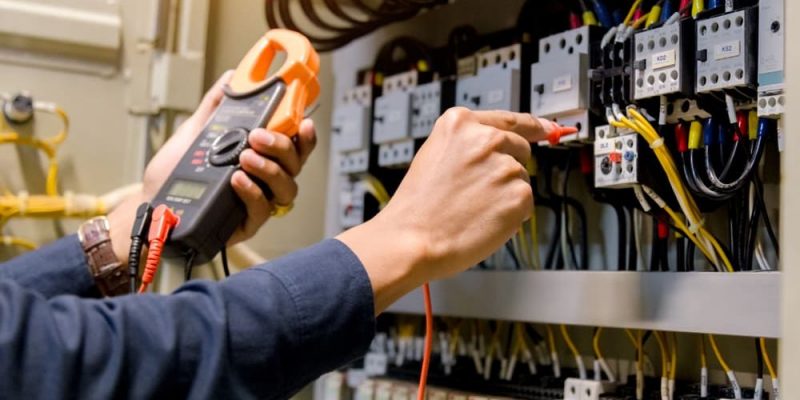We explain what corrective maintenance is, examples, advantages and disadvantages. In addition, preventive and predictive maintenance.

What is corrective maintenance?
Corrective maintenance It is one that seeks to repair errors, defects or breakdowns that a piece of equipment or tool may present regardless of whether it continues to work or not.
This is the oldest type of maintenance known and the only one that was applied until the times of the First World War, since at that time the machines and tools were simple enough to just wait for a failure to manifest itself.
Corrective maintenance can be understood as the simple repair of something broken. Given its nature, its need is impossible to predict and plan over time, so it is usually implemented in emergency or even catastrophe scenarios, and usually involves changing parts and spare parts of the equipment, as well as the assistance of specialized personnel.
Corrective maintenance can occur even when equipment continues to operate, that is, it should not always wait for total collapse, and taking this into account, a distinction is usually made between:
- Urgent or unplanned corrective maintenance which is carried out under a state of urgency or emergency, that is, in response to damage or damage that occurs suddenly and requires an immediate solution.
- Non-urgent or planned corrective maintenance which involves only cases in which the failure or defect is discovered, but the equipment or tool can continue working (generally with less effectiveness or with greater risk margins), so that the repair can be carried out later.
See also: Production costs
Advantages and disadvantages of corrective maintenance
In general terms, corrective maintenance has the following set of advantages and disadvantages:
Advantages:
- Allow the equipment or machine continues to operate without having to replace it with a new one.
- They almost always have a concrete solution (if any) which lies in the replacement of the appropriate spare part or its repair.
- Does not involve extra costs as long as the failure does not occur.
- It is usually the most common of maintenance.
Disadvantages:
- It responds to a defect that occurs without prior notice, and therefore may be needed in a difficult moment.
- In some cases, the equipment will be useless until corrective maintenance is carried out.
- Does not protect or care for equipment so it has no impact on its useful life.
- Your costs in time and money can be unpredictable and they tend to be always greater in the long term.
- Almost always requires the intervention of a specialist.
Examples of corrective maintenance
Some examples of corrective maintenance may be:
- The replacement of the pedal chain of a bicycle.
- The replacement of starting motor for a new one in a car.
- The change of a screen broken cell phone.
- The welding of a pipe gas in a refrigerator.
- The reinstallation of operating system on a laptop.
Preventive maintenance

Unlike corrective maintenance, preventive maintenance, as its name indicates, seeks to prevent the appearance of defects before they happen and therefore extend the normal useful life of the equipment.
That is, it is the form of maintenance that postpones the need for corrective maintenance and generally consists of cleaning, tuning, greasing, balancing or replacing worn parts in the devices. It has the virtue of being able to plan and that it generally does not prevent the use of equipment or tools for a long time.
Examples of this type of maintenance are:
- Changing oil and filters in a car.
- The routine unclogging of heating gas ducts.
- Defragmenting a computer's hard drive.
Predictive maintenance
Often associated with preventive maintenance, predictive maintenance, as its name suggests, is based on the prediction of breakdowns, that is, on evaluating the current state of equipment to determine how likely a breakdown is to occur or how necessary a preventive maintenance routine would be. It is, therefore, a diagnostic, evaluation or control exercise.
Examples of this type of maintenance are:
- Checking a car in the workshop before embarking on a land trip.
- Running diagnostic or antivirus programs on a computer.
- Thermographic analysis of electronic or electrical equipment and installations.
Continue with: Productivity
References
- “Corrective maintenance” on Wikipedia.
- “Types of maintenance” in Petrochemical Maintenance.
- “Advantages and disadvantages of corrective maintenance” in FUSO Peru.
- “Corrective, preventive and predictive maintenance” in Comarch.





